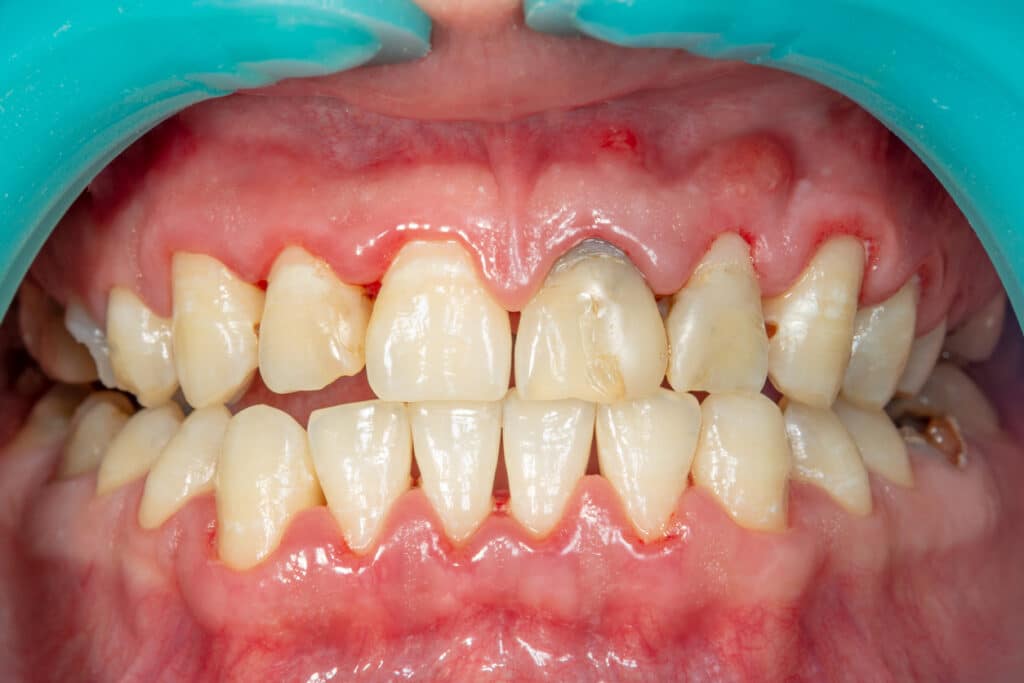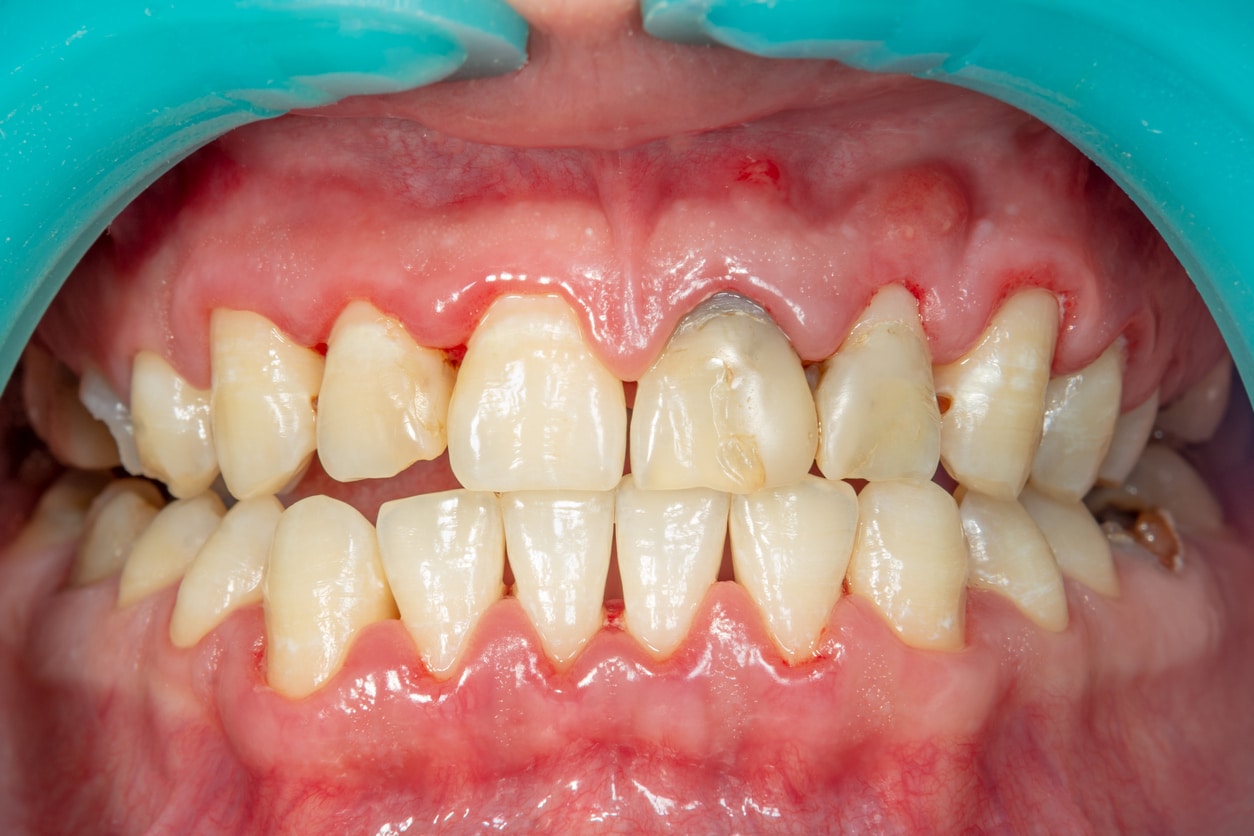Periodontal Disease information – As we wrapped up National Dental Hygiene Month in October, it seemed fitting to follow up with information about the different stages of gum disease.
Your hygienist should take measurements of the gums at least every 12 months and discuss with you what stage of health your gums and bones are at. Part of our periodontal assessment includes but is not limited to pocket depths, recession, bleeding, mobility, and root furcation involvement.
This tool along with X-rays helps us decide what treatment will be best for you.
Periodontal Disease Information

Healthy Gums: Gum tissue is pink and firm, with no bleeding present and 2-3mm gum pockets. The teeth are firmly supported by the surrounding bone and gums. These are the ideal numbers to hear called out.
Gingivitis: Pockets are slightly deeper, usually 4mm. Gingivitis is caused by an accumulation of bacteria. Gums become visibly swollen and usually bleed easily with brushing and flossing. At this stage, the inflammation is reversible as it is limited to the gum tissue. If the bacteria are not disrupted and the plaque removed, gingivitis will progress to gum disease. This is the time to take the recommendations from your hygienist for a new home care routine seriously.
Once gingivitis has progressed to periodontitis, we use categories to express the severity.
- Early Periodontitis: The inflammation in the gums progresses and the gums start to pull away from the teeth forming pockets that further trap plaque, bacteria, and food leading to the infection in the gums. The bacterial toxins as well as the body’s immune response will begin the process of bone loss. These pockets need to be cleaned out by the hygienist to get them to shrink up and stop the progression. Proper home care is imperative.
- Moderate Periodontitis: As the infection worsens, inflammation will become more pronounced and bleeding more severe. You may begin to experience discomfort as further damage is done to the bone and gums continue to recede. You will most likely require a few appointments for gum therapy to get this process to slow down.
- Advanced Periodontitis: As gum disease worsens, pockets will deepen and periodontal abscesses will begin to form. These will cause pain and a foul taste. Enough bone has been lost at this point for the teeth to be significantly mobile and have a poor prognosis. At this stage, you could begin to lose teeth or require a specialist to do a surgical procedure.
Gum disease is the most common cause of tooth loss among adults, but can be prevented with good oral hygiene. If you’re beyond the prevention stage and have already been diagnosed with gum disease, don’t despair!
If caught early and with proper therapy, gum disease can be treated and the progression significantly slowed. Our hygienists are highly trained professionals who regardless of your state of gum health will be your partner toward a healthier mouth!

